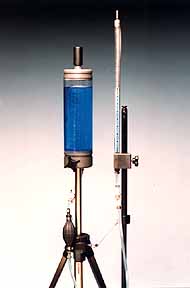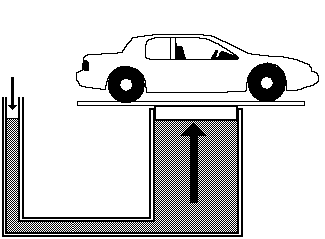Pascal's principle (sometimes known as "Pascal's law") states that "when there is an increase in pressure at any point in a confined fluid, there is any equal increase at every other point in the container." (see the article that this came from)
As confusing as it looks, the above diagram is really very simple. In a body of liquid, as depth increases, pressure increases. The numbers on the right are calculations showing the fact that if pressure increases at one area, it increases everywhere in that body of liquid. If 5 units of pressure are added to P2, 5 units of pressure are added to P1 and P3 also. If you want more detail, visit "Pascal's Principle and Hydraulics"


Physicists use a manometer(shown at top left) to measure pressure in gasses. At the top right is a picture of a hydraulic lift. Pressure is added to the fluid in the small cylinder (usually by an air compressor), causing the fluid to rise in the large cylinder, therefore raising the platform with the car.